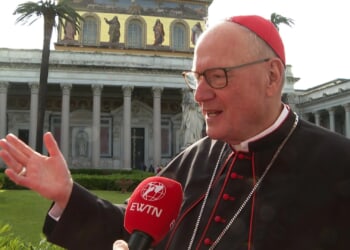
Don’t miss the full story from our staff writer Jeff Mordock, whose reporting is the basis of this AI-assisted article describing some key background information about Fort Knox.
• Fort Knox’s famous U.S. Bullion Depository was built in 1936 and houses the nation’s gold reserves in Kentucky.
• It stores more than 147.4 million ounces of gold, making it the largest gold repository of any U.S. military installation. This represents a significant portion of America’s total gold holdings of nearly 287 million ounces.
• The facility maintains extraordinary security measures that rival those of military bases housing nuclear weapons. No tours are offered, no visitors are allowed, and the installation’s security is described as “unbelievable” by experts who have accessed it.
• Fort Knox has been subject to conspiracy theories since its inception. The facility even inspired the plot of the 1964 James Bond film “Goldfinger.”
• The last public audit occurred in September 1974, when members of Congress and journalists were allowed to verify the gold supply during the Ford administration. The U.S. Mint said this public verification was necessary to reassure Americans their gold was “intact and safe.”
• Annual private audits are conducted by the government, with Treasury officials confirming that all gold remains accounted for. The most recent audit mentioned in the story took place in September 2024.
• The total value of gold stored there exceeds hundreds of billions of dollars, contributing to America’s position as the world’s largest gold holder with reserves worth more than $950 billion.
Read more: Trump develops new perspective on Fort Knox gold
This article is written with the assistance of generative artificial intelligence based solely on Washington Times original reporting and wire services. For more information, please read our AI policy or contact Ann Wog, Managing Editor for Digital, at awog@washingtontimes.com
The Washington Times AI Ethics Newsroom Committee can be reached at aispotlight@washingtontimes.com.


![Declaration Gaffe, Whisper Creep, and Conflicting Cancer Claims [WATCH]](https://www.right2024.com/wp-content/uploads/2025/05/Declaration-Gaffe-Whisper-Creep-and-Conflicting-Cancer-Claims-WATCH-350x250.jpg)


![Stephen A. Smith Goes Ballistic on DeMS-13 Senator Van Hollen [WATCH]](https://www.right2024.com/wp-content/uploads/2025/05/Stephen-A-Smith-Goes-Ballistic-on-DeMS-13-Senator-Van-Hollen-350x250.jpg)
![AZ Officer Rescues Fire Captain’s Daughter from Burning Car in Dramatic Video [WATCH]](https://www.right2024.com/wp-content/uploads/2025/05/AZ-Officer-Rescues-Fire-Captains-Daughter-from-Burning-Car-in-350x250.jpg)

![Trump Drops Bombshell Video Linking Clintons to Mysterious Deaths [WATCH]](https://www.right2024.com/wp-content/uploads/2025/05/Trump-Drops-Bombshell-Video-Linking-Clintons-to-Mysterious-Deaths-WATCH-350x250.jpg)


![Minnesota Officials Panicking Over Derek Chauvin Pardon Speculation, Potential Unrest [WATCH]](https://www.right2024.com/wp-content/uploads/2025/05/Minnesota-Officials-Panicking-Over-Derek-Chauvin-Pardon-Speculation-Potential-Unrest-350x250.jpg)





